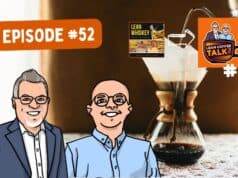We recently released Issue 14 of Lean Progress and it included a brief set of tips on how to apply 5S on email. There is perhaps much more that could be written, but most people are so overwhelmed by the giant pile of emails that anything that gets us started can be a help. For many people who complain about their email, they don't feel compelled to actually invest in working on a solution to the problem. However, for many organizations, email has become a dominant form of communication and coordination. Much of the waste in our organizations suffer from problems in communication and coordination. You do the math. Lack of 5S in email is a bigger problem than most of us want to realize.
5S for Email
Do you have one (or more) of those e-mail accounts where the scroll bar is so small because the number of e-mails in your account is so large? Do you find yourself hunting through hundreds of messages to find the one you're looking for? If so, it is probably time to apply the 5Ss to your account.
Step 1: Sift
First things first, it's time to get rid of all of the messages that are old and obsolete. Be aggressive in this step. Don't keep messages that you know will never be returned. If there are attachments that need to be saved or printed, do so now. Get rid of as much as you can.
Step 2: Sweep
Since we're talking about computer applications, there really isn't the necessary cleaning activities that would be required in a physical workspace. Still this is a good time to make sure your e-mail pages have the appropriate toolbars and proper layout. Clean-up anything that doesn't look right.
Step 3: Sort
Now that what needs to be kept has been identified, the next task is to find a place for all of your e-mails. The easiest and most obvious way is to create folders based on tasks or other buckets of work where emails can be neatly filed for future use. The goal is to remove as much from your inbox as possible.
Step 4: Sanitize
This step is critically important as you will now set rules for yourself to keep your e-mail account clean. Some rules you may consider are setting a maximum number of e-mails in
your inbox. Once that number is exceeded, complete another sorting and sifting cycle. You can also set rules on how many emails are permissible in each folder. Another rule might be that any unopened e-mail will be automatically deleted after a certain number of days. The key is to set rules for yourself to keep things organized.
Step 5: Sustain
The final step in the process is setting up a quick audit process to make certain rules are being followed and your account is staying in good shape. In the beginning, this audit may need to be everyday to force the discipline to adhere. Overtime, it will become a learned way of working and you will be the envy of all your coworkers. Give it a try. You will no longer look at your e-mail workspace with dread and you will be far more responsive in replying to other's requests. At the very least, this exercise is a great way to apply one of the cornerstone lean tools to the knowledge world.
Please scroll down (or click) to post a comment. Connect with me on LinkedIn.
Let’s work together to build a culture of continuous improvement and psychological safety. If you're a leader looking to create lasting change—not just projects—I help organizations:
- Engage people at all levels in sustainable improvement
- Shift from fear of mistakes to learning from them
- Apply Lean thinking in practical, people-centered ways
Interested in coaching or a keynote talk? Let’s start a conversation.










Great tips. I’ve found Gmail to be the best email application ever made. It’s really helped me stay organized and focused. It does take some time to get used to… but once you do you’ll be forwarding all your email accounts to it. Outlook is dead as far as I’m concerned!
One of the best things I ever did was was turn off the email indicator on my desktop in outlook. It took my boss a few weeks to get used to the fact that I hadn’t read his email he sent me 45 seconds earlier, but now people know to call if it’s critical or else I’ll respond within 24 hours. The productivity boost is definately worth it.
As an addition to this post I recommend Getting Things Done by David Allen. Similar flow and behavior for managing our tasks, emails and everything else that comes across our desks.
I think Getting Things Done is a fantastic book – thank you for sharing. It certainly goes beyond personal 5S but the point around the clutter that 5S solves is clear – clutter causes distraction.
EMail is a big distraction in our business. To that end I only open my mailbox 3 times a day. When I first get to work, just before lunch and just before I go home. Each time I open it I process ‘all’ EMails in my Inbox following the ‘do it, delegate it, defer it, drop it’ principle.
Check out Merlin Mann’s work at 43 folders http://www.43folders.com/2005/02/15/five-fast-email-productivity-tips some of which is available on utube.
Tom
We’ve seen how tough it can be to change a culture and not get folks to throw the “baby out with the bath water,” as the old saying goes. In a business where accurate communication and timely feedback are critical, the need to de-clutter, while having information and items at point of use is huge. In 09 we’re going to continue focusing on communicating the “why” behind our 6S program, which you have described perfectly in the post. Clean to be clean is muda in itself. Clean and structued to respond quickly to what internal and external customers need is important.
Congratulations on recognizing the need and taking the time to explicitly communicate WHY. I think this is something most companies miss. They miss it up front, and they miss it in the continued support of successful 5S, and they miss it when trying to troubleshoot why a 5S program isn’t working.
Jamie,
One of the issues I struggle with in applying 5S to email is the fact that Google Desktop or Windows Desktop Search can now find any email within .03 seconds. That capability raises the question of where there’s more muda: in organizing/sorting/filtering/deleting email, or in just dumping it into a big pile.
In keeping with 5S, of course, getting rid of waste is critical. But increasingly, the effort to 5S the inbox is rendered pointless by these powerful search tools.
I may be overstating the case, but I’m coming to believe that the really important rule is to *process* all the incoming mail (do, delegate, designate, or delete), and then not worry about where it lives after that.
Greetings,
I have a quick question about the order of events in the 5S. My belief was that it was 1) Sort, 2) Set and then 3) Sweep. But I see that you have changed the order. I have seen this format elsewhere too. I am curious about this.
Thanks,
Harish Jose
Don’t worry about semantics. They are basically made up words to begin with and then when they get translated while remaining “S” words there are many different versions. But you have to know what to keep and get rid of before getting rid of the bad stuff, and you have to get rid of the bad stuff before you begin to organize it. Anyway you slice, you still need to follow that basic sequence.
Dear Mr. Flinchbaugh,
You said “Anyway you slice, you still need to follow that basic sequence.” Can you please clarify? I was told that Hirano’s 5 pillars book has the most accurate translation for the five Japanese words. Ohno also talks about the 5s (or 4s) in his Workplace Management.
Why should there be different versions for 5S especially when the fourth S stands for standardize?
-Harish
Would it be nice if everyone used the same translation? Absolutely. But considering many have used the translations they have for 20 years, it is pretty difficult to get millions of people to agree to one standard when they have been using another already.
Worry about what the step is, not what you call it. The words are never as important as the work itself.
Within an organization, you should have one standard. But this still shouldn’t get in the way of progress. I have seen many companies where different sites started their efforts independently. They started with different language. Once they tried to get together and use a common language, they had a really hard time changing what people were used to considering they have a couple of years into it. It proved to be much letter to leave it alone than force people to use different words for the same thing.
Dear Mr. Flinchbaugh,
Thank you for your kind reply. I hope I did not come off in the wrong way.
Sincerely,
Harish